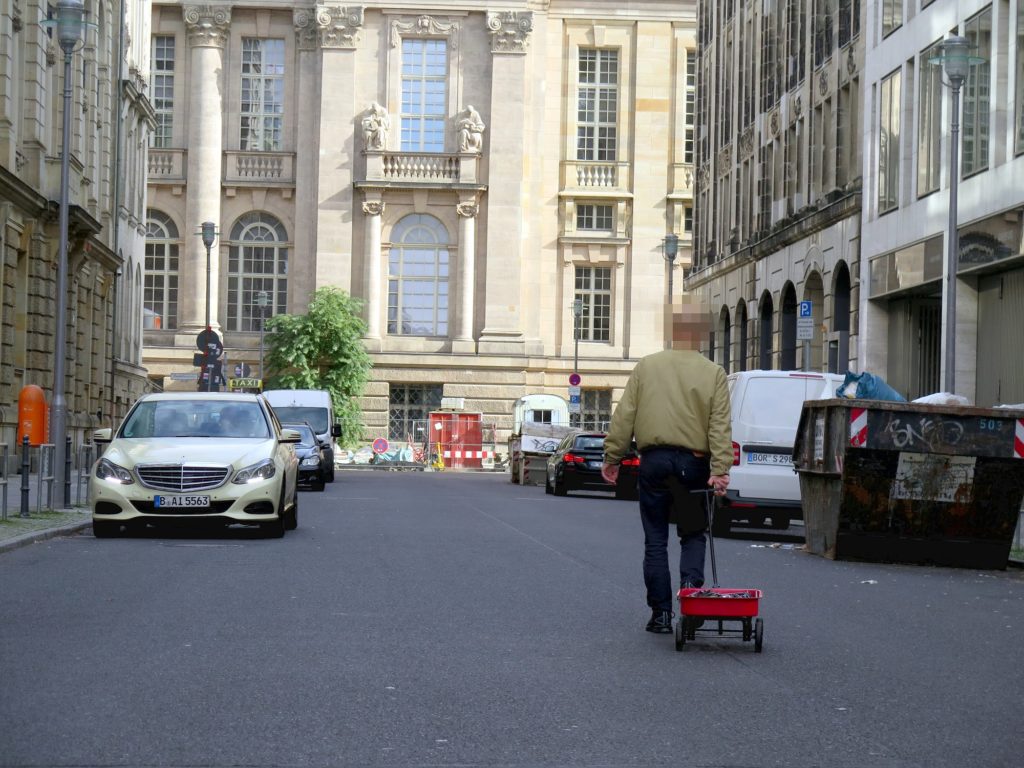Art World
How One Artist Hacked Google Maps to Fake a Traffic Jam and Make a Point About the Flaws of Big Data
Simon Weckert's physical intervention went digitally viral.

Simon Weckert's physical intervention went digitally viral.

Caroline Goldstein

Armed with nothing but a little red wagon filled with 99 secondhand cellphones, artist Simon Weckert managed to cause a sprawling traffic jam—a very 21st-century virtual traffic jam, that is.
The Berlin-based artist simply turned on all the phones with the Google Maps app launched, and strolled down quiet city streets with his handcart. The blocks he walked down weren’t congested, but what Google Maps saw was a signal cluster. Typically that would indicate a traffic jam or some other mishap, which prompts the app to transmit that information so that users can avoid the area and seek alternative routes.
Weckert’s intervention was born from a simple question. Google Maps functions by aggregating data from multiple sources, but mainly relies on actual users who have location services turned on—so what would happen if you created a literal scrum of digital devices? The idea first came to Weckert when he was attending a May Day demonstration in Berlin, when, among the throngs of people, he realized that Google Maps was visualizing the concentration of people (and their phones) as vehicles on the street.
The project has been in the works for about two years, with most of that time spent researching the nature of maps and systems. But the most important part, he said, is the performative nature of his Google Maps Hack.
“It really became more powerful as a performance of activism,” Weckert said, describing what he calls “one man’s literal intervention against a huge tech giant.” The ease with which he upended Google Maps “shows you how rudimentary these systems are.”

Simon Weckert, “Google Maps Hack,” Berlin 2020. ©Simon Weckert.
In a video posted to YouTube, you can watch the wagon’s route as it slowly turns streets classified as green (smooth sailing! continue on your path) into red zones (traffic! avoid!), as the data is fed back in a closed-system to real-time users.
Weckert timed his hacktivism to coincide with the upcoming 15th anniversary of the launch of Google Maps. One of his walking routes actually passed by the company’s headquarters in Berlin, which feeds into his larger mission.
“Even if you don’t have location services on, or you’re not using the app, data is still being collected,” Weckert told Artnet News by phone. For those who understand the pervasiveness of data mining, it can still be hard to opt out completely. Like the email listserv you can never manage to unsubscribe from, complacency often makes our decisions for us.
Weckert described his ideas in terms laid out by the theorist Marshall McLuhan, “the interaction between how technology shapes human behavior, and now, how human behavior can, in return, shape technology.” He references a paper by Moritz Alhert’s called “The Power of Virtual Maps,” which analyzes how maps are not as neutral as we might think. “There’s a real tension, because maps are not a territory at all, they are a different version of reality,” he told Artnet News. “Data is always collected for a specific purpose, for an entity, using instruments created by a company.”
Google, for its part, responded to the act in good humor, telling the website 9to5Google:
Whether via car or cart or camel, we love seeing creative uses of Google Maps as it helps us make maps work better over time.
Traffic data in Google Maps is refreshed continuously thanks to information from a variety of sources, including aggregated anonymized data from people who have location services turned on and contributions from the Google Maps community. We’ve launched the ability to distinguish between cars and motorcycles in several countries including India, Indonesia and Egypt, though we haven’t quite cracked traveling by wagon. We appreciate seeing creative uses of Google Maps like this as it helps us make maps work better over time.